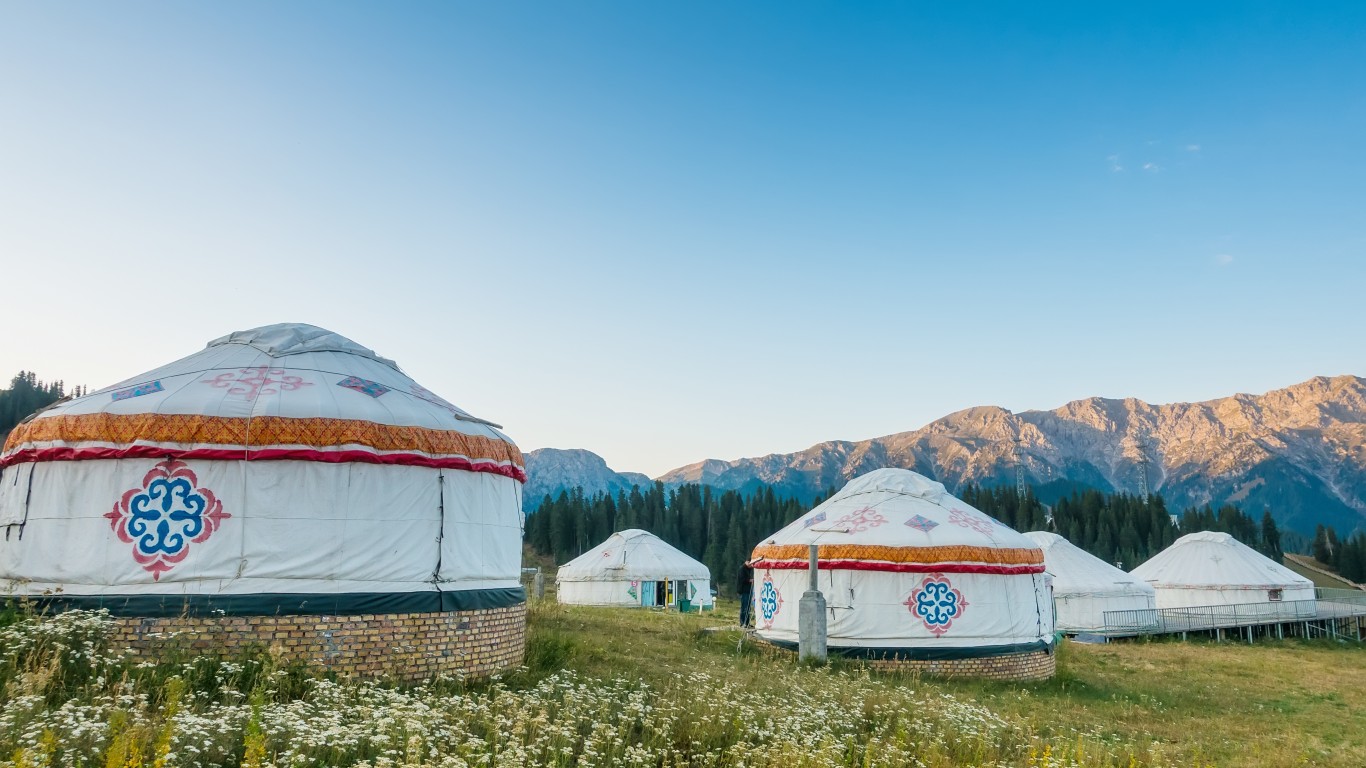
20. Mongolia
> PM2.5 concentration: 33.1 μg/m³
> Total population 2020: 3,278,292
Rapid urbanization of Mongolia’s capital city, where half of the country’s population lives, has created an air-pollution crisis. According to UNICEF, PM2.5 concentrations can average a staggering 687 micrograms per cubic meter of air in the smoggiest parts of Ulaanbaatar on the coldest days of the year. This is thanks to widespread use of coal-burning stoves in the city’s sprawling, impoverished informal settlements.
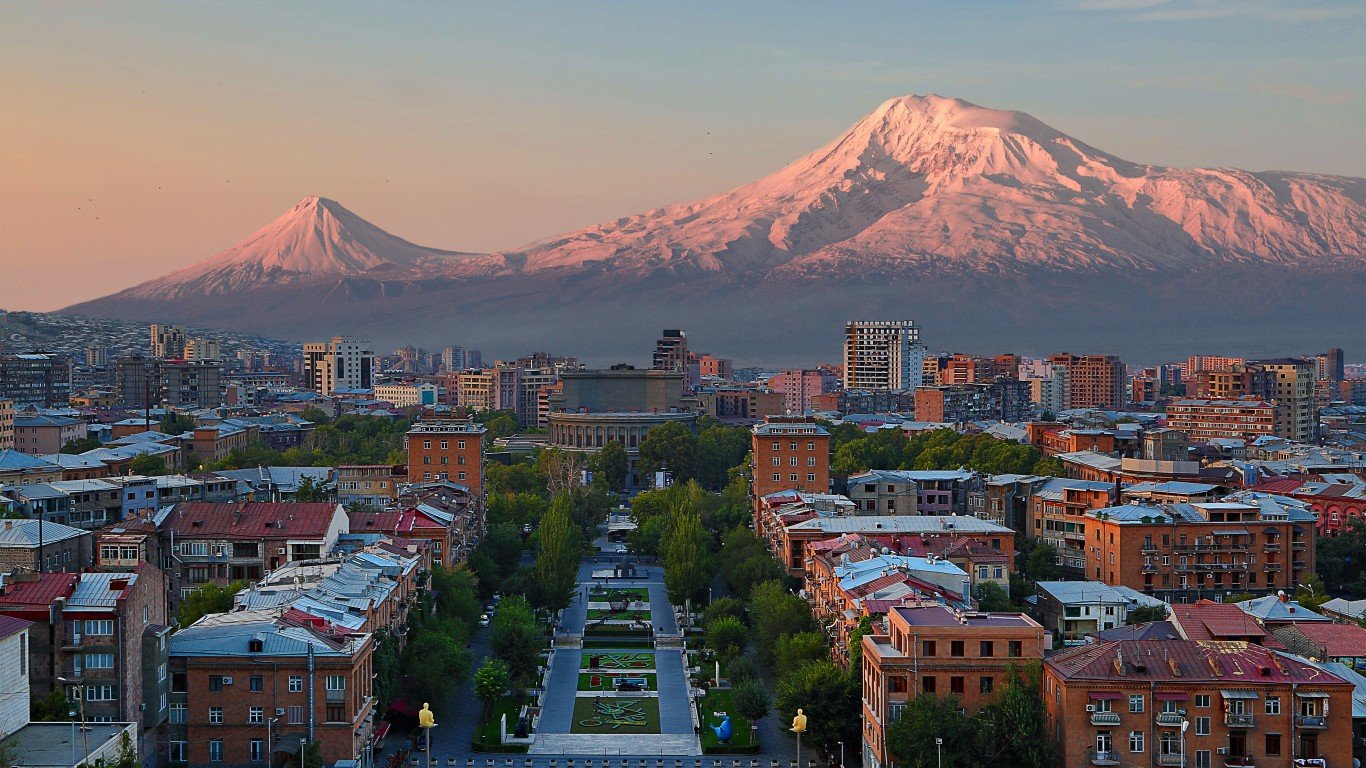
19. Armenia
> PM2.5 concentration: 33.9 μg/m³
> Total population 2020: 2,963,234
Poor urban air quality in this Eurasian country is caused mainly by motor vehicle emissions and industrial activities, especially from mining and food processing. According to the Business & Human Rights Resource Centre, a U.K.-based global corporate watchdog group, underregulated basalt and clay mines owned by former government officials are a significant contributor to air pollution in the Armenian capital city of Yerevan.
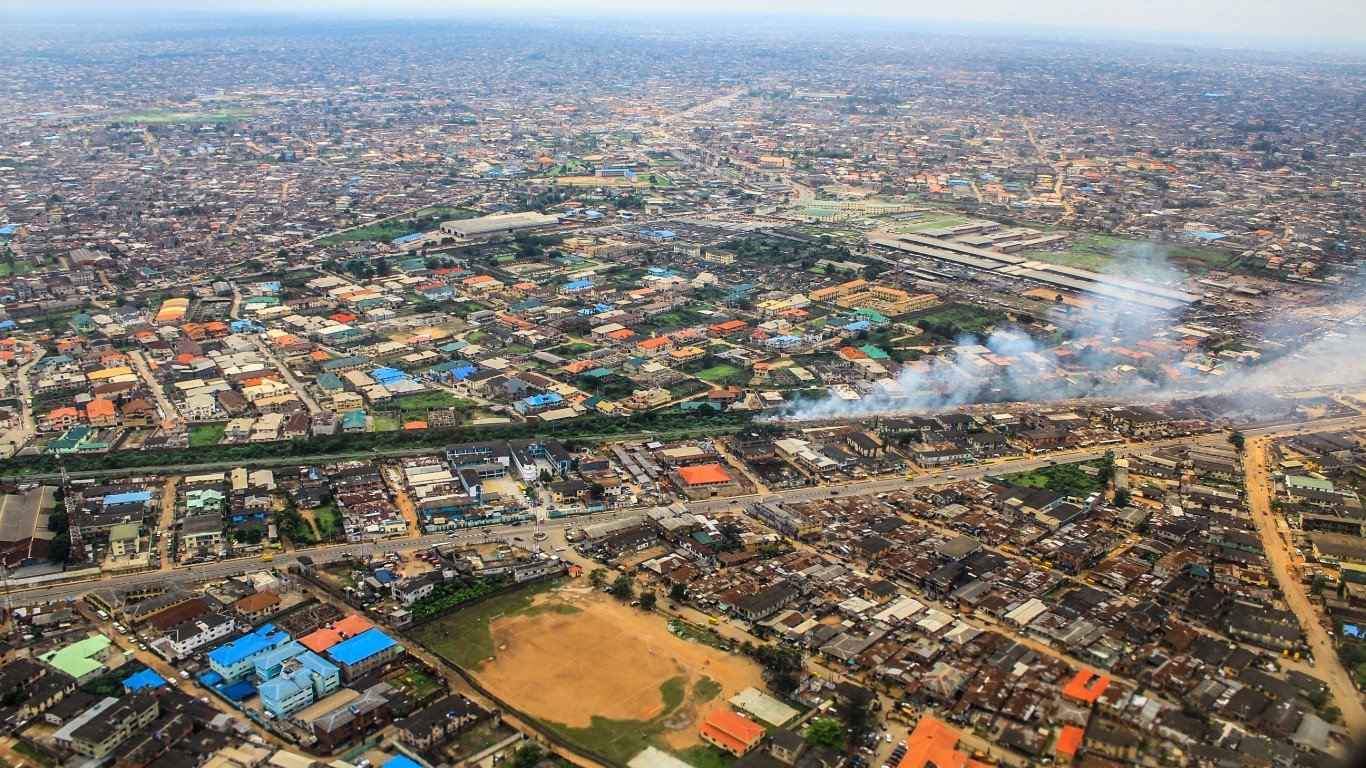
18. Nigeria
> PM2.5 concentration: 34.0 μg/m³
> Total population 2020: 206,139,587
Africa’s largest country by population also tops Africa’s list of countries with the highest number of premature deaths linked to poor urban air quality. In addition to the usual suspects of motor vehicle and industrial emissions, sources of Nigeria’s urban air pollution include the widespread habit of trash-burning due to lack of adequate waste management infrastructure and the broad use of firewood and coal to cook meals.
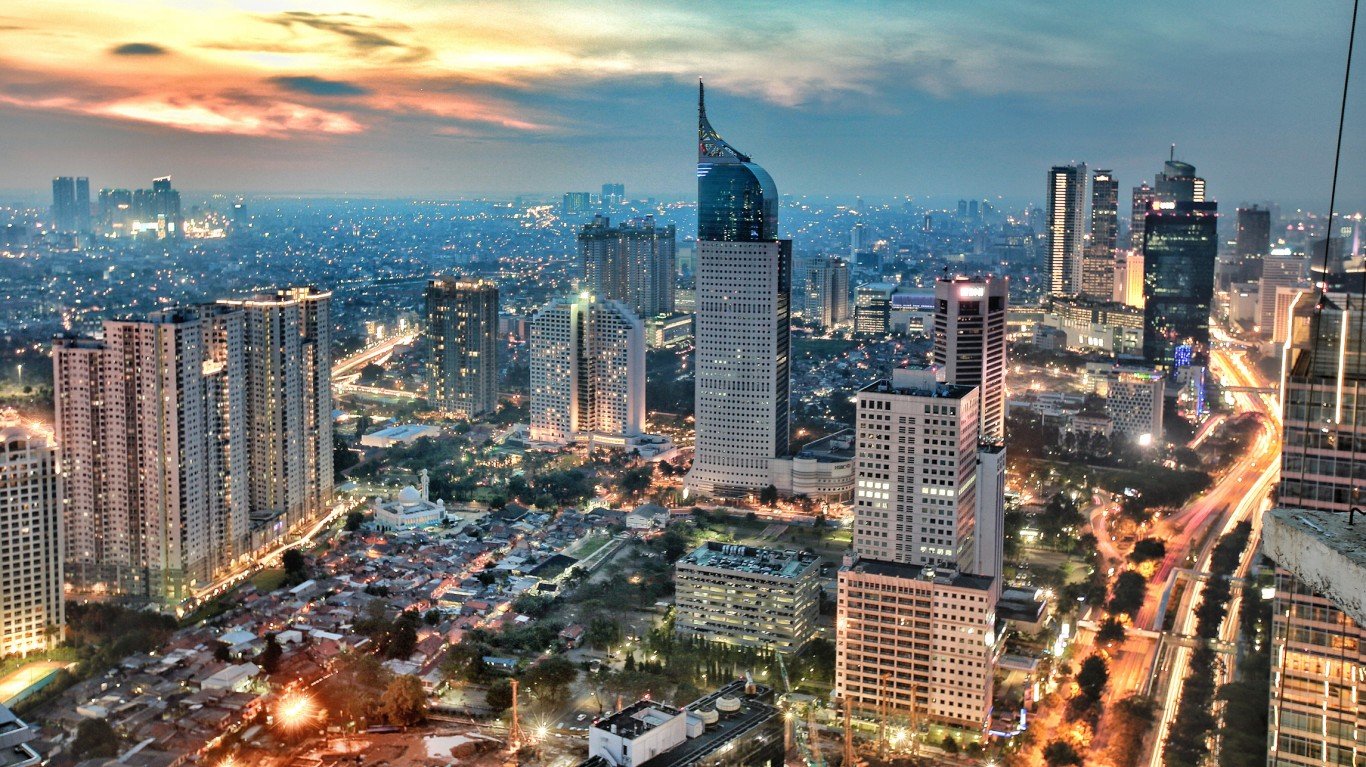
17. Indonesia
> PM2.5 concentration: 34.3 μg/m³
> Total population 2020: 273,523,621
In addition to motor vehicle exhaust, the main contributors to poor urban air quality in the world’s fourth most-populous country are the oil and gas, mining, and automobile industries. Widespread forest fires during the dry season are also a factor. Indonesians lose an average of 1.2 years of life expectancy because of these pollutants, according to the University of Chicago’s Air Quality Life Index.
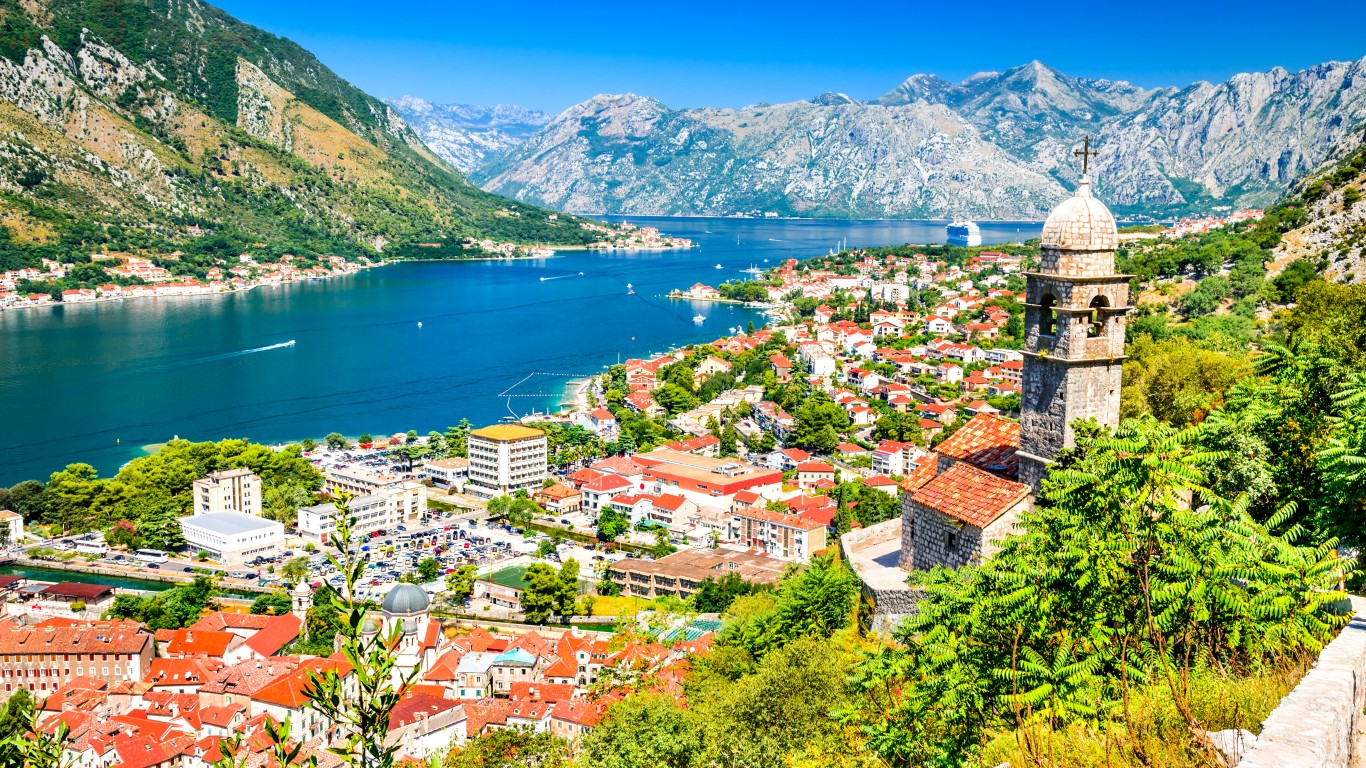
16. Montenegro
> PM2.5 concentration: 35.2 μg/m³
> Total population 2020: 621,306
Montenegro is the only country on this list with a population under 1 million. This small and scenic Balkan country has relatively sizable steelmaking, agricultural processing, and aluminum industries that contribute to high PM2.5 levels.

 24/7 Tempo
24/7 Tempo




